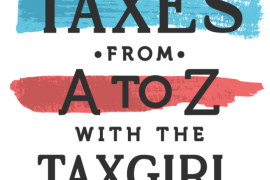It’s my annual “Taxes from A to Z” series! If you’re wondering whether you can claim wardrobe expenses or whether to deduct a capital loss, you won’t want to miss it.
Z is for Zero Percent Rate.
Words matter and when it comes to tax, words matter a great deal. Sometimes, taxpayers confuse results with rules. Just because the result may be the same doesn’t mean that the rule is the same. Consider the zero percent rate.
One of the mistakes that taxpayers make is conflating a zero percent rate with being exempt from tax: it is not the same thing. In some instances, if you are exempt from tax (or a specific kind of tax), you don’t have to file a tax return at all. Examples include taxpayers who do not earn enough income during the year to be subject to meet the income requirements for filing a return.
That’s not necessarily the same as being taxed at a zero percent rate. You may receive income that is taxed at zero percent but is still reportable. A good example is the zero percent tax rate on long-term capital gains. It’s not an exemption: long term capital gains are taxed at zero percent for taxpayers in the 15% marginal tax rate or below. If you are required to file a tax return, those transactions are still reportable even if they are not taxable.
It may be the case that you are required to file a tax return (for example, you have self-employment income of more than $400) but because of your exemptions and credits, you are ultimately taxed at a zero percent rate. You’ll still need to report that income.
I know what you’re thinking: what’s the worst that could happen if I don’t file when the rate is zero anyway? If you decide not to file a tax return, the statute of limitations never starts running: that means that the Internal Revenue Service (IRS) could audit you indefinitely. If you do file but opt out of reporting certain transactions, you could extend the statute of limitations. And of course, keep in mind that certain tax forms which are sent to the IRS – like those forms 1099-B which report your capital gains – aren’t going to note that you’re taxed at a zero percent rate: they just offer reportable transactions. Don’t give the IRS a reason or more time to look at your returns: report properly – even if the result is zero tax.
If you have questions about whether you need to report certain transactions, check with your tax professional for more information.
For more Taxes A to Z, check out:
- A is for Affordable Care Act Reporting
- B is for Back Pay
- C is for Canceled Debt
- D is for Dependents
- E is for Eligible Rollover Distributions
- F is for Fat Finger Error
- G is for GI Bill
- H is for Harvesting Losses
- I is for Investment Income Expense
- J is for Junk Bonds
- K is for Strike Price
- L is for Late Filing & Late Payment Penalties
- M is for Marginal Tax Rate
- N is for NSF
- O is for Over-The-Counter Medications
- P is for Pease Limitations
- Q is for Quid Pro Quo
- R is for Rounding Off
- S is for Simplified Option for the Home Office Deduction
- T is for Tax Treaty
- U is for United States Tax Court
- V is for Virtual Currency
- W is for Wash Sale
- X is for X (or XD)
- Y is for Your Rights as a Taxpayer




